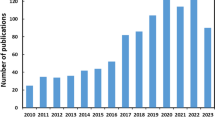Abstract
The wetting balance test was performed in an attempt to estimate the fluxless wetting properties of under bump metallurgy (UBM)-coated Si-wafer and top surface metallurgy (TSM)-coated glass substrate to SnPb solder. The wetting curves of the single-and double-side-coated UBM had a similar shape and the parameters characterizing the curve shape showed a similar tendency as a function of temperature. Wetting property estimation was possible with the new wettability indices from the wetting curves of one side-coated specimens; Fmin, Fs, and ts. Au/Cu/Cr UBM was better than Au/Ni/Ti UBM from the point of wetting time. For TSM, it was more effective to use Cu as a wetting layer with Au as a protection layer than to use Au as a wetting layer alone. The contact angle of one-side-coated Si-plate to SnPb solder can be calculated from the force balance equation by measuring static state force and tilt angle. The contact angles of Au/Cu/Cr and Au/Ni/Ti UBM of Si-wafer to SnPb solder were 59.9° and 63.9°, respectively. The contact angles of Au/Cu/Cr and Au/Cr TSM of glass to SnPb were 78.9 and 76.1°, respectively.
Similar content being viewed by others
References
The Int. Technology Roadmap for Semiconductors, 1999 edition: Assembly and Packaging (San Jose, CA:SIA, 1999), p. 224.
Demand for Development of Industrial Technology Towards Year 2000, vol. 23 (Daejon, Korea: Korea Institute of Industrial Technology Evaluation and Planning, Demand, 1996), p. 139.
J. Lau ed.Flip Chip Technologies (New York: McGraw-Hill, 1995), p. 123.
P. T. Vianco,The Metal Science of Joining (Warrendale, PA: TMS, 1992), p. 265.
R. J. Wassink,Soldering in Electronics (Ary, Scotland: Electrochemical Soc., 1989), p. 300.
R. B. Cinique and J. W. Morris, Jr.,J. Electron. Mater. 23, 533 (1994).
L. M. Racz and J. Szekely,Adv. in Electron. Pkg. EEP-vol. 4–2 1103 (1993).
C. Lea and W. A. Dench,Soldering & Surface Mount Technol. 4, 14 (1990).
A. D. Roming et al.,Solder Mechanics, ed. D. R. Frear et al. (Warrendale, PA: TMS, 1990), p. 36.
J. Y. Park (Doctoral Thesis, Seoul National University, Seoul, 2000).
H. K. Kim, H. K. Liou, and K. N. Tu,J. Mater. Res. 10, 497 (1995).
H. H. Manko,Solders and Soldering (New York: McGraw-Hill, 1979), p. 313.
W. Lin and Y.C. Lee,IEEE Trans. on Adv. Pkg. 22, 592 (1999).
W. Moeller and D. Knoedler,Verbindungstechnik in der Elektnonik (March 1992), p. 14.
F. Masahiko et al.,Proc. of Electronic Components and Technology Conf. (New York: IEEE-CPMT, 1999),p. 408.
Author information
Authors and Affiliations
Rights and permissions
About this article
Cite this article
Hong, SM., Park, JY., Jung, JP. et al. Fluxless wetting propeities of one-side-coated under bump metallurgy and top surface metallurgy. J. Electron. Mater. 30, 937–944 (2001). https://doi.org/10.1007/BF02657714
Received:
Accepted:
Issue Date:
DOI: https://doi.org/10.1007/BF02657714




